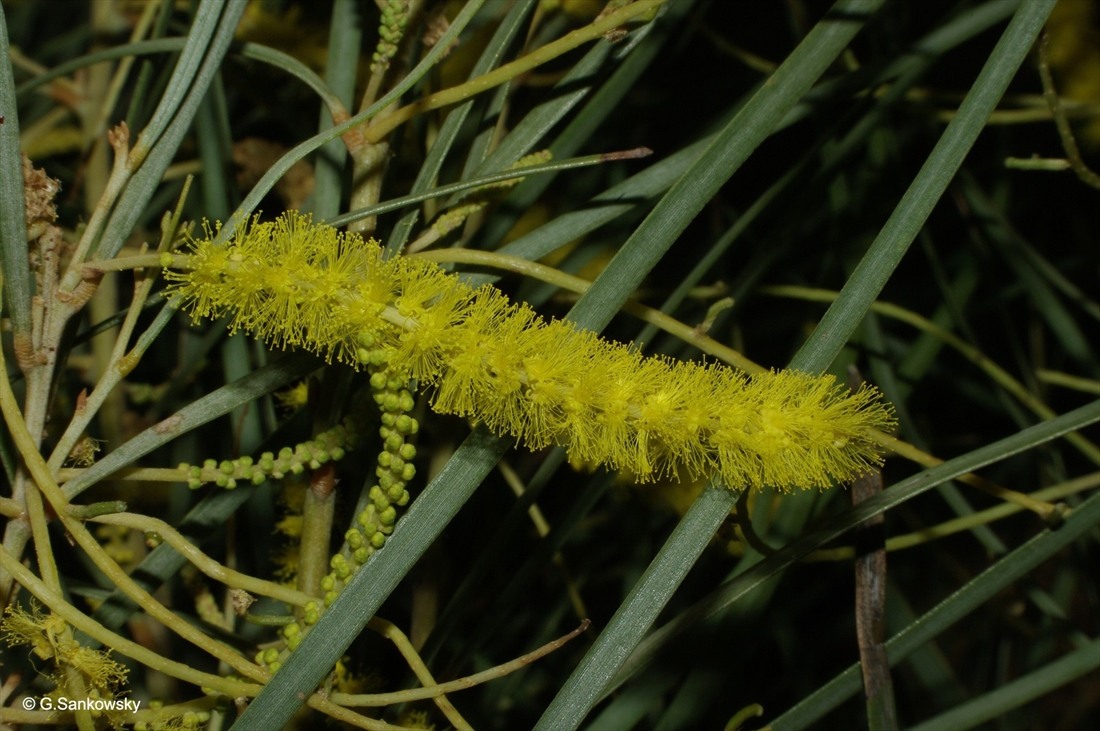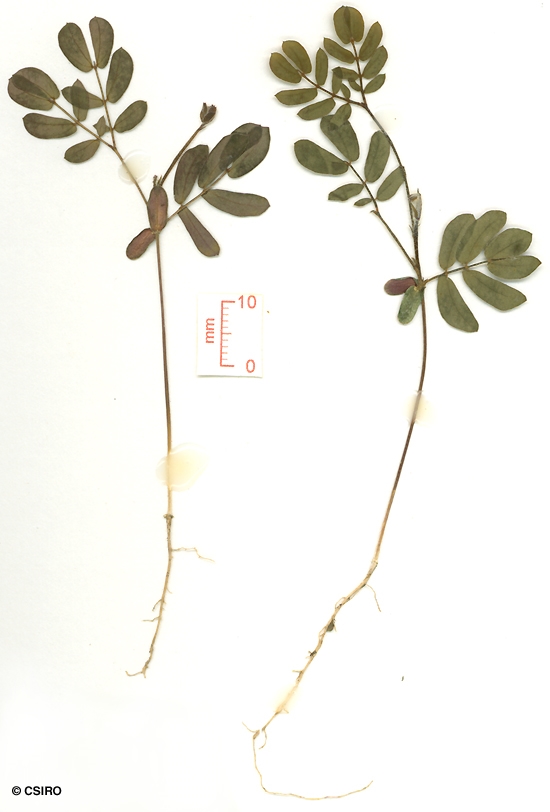Australian Tropical Rainforest Plants - Online edition
Acacia shirleyi Maiden





Maiden, J.H. (1920) Journal and Proceedings of the Royal Society of New South Wales 53: 218. Type: Mount Rose, Eidsvold, Queensland (Dr. T.L. Bancroft, No. 14).
Lancewood
A small tree. Dead bark layered. Blaze odour resembles violets (Viola odorata).
Leaves phyllodineous. Leaf blades about 10-15 x 0.2-0.7 cm. Venation almost limited to a midrib which is raised on each surface of the leaf blade. A gland is usually present near the leaf blade-petiole junction. Petiole transversely wrinkled.
Spikes moderately dense, about 2-3.5 cm long on peduncles about 5-9 mm long. Calyx about 0.5-0.8 mm long, with densely hirsute, obtuse lobes about 0.2-0.3 mm long. Corolla lobes glabrous, fused to about the middle, strongly reflexed, about 1.5-1.9 mm long. Stamens about 3 mm long, ovary densely pubescent.
Cotyledons elliptic, about 5-7 x 2-3 mm. First leaf pinnate, second leaf bipinnate, leaflets unequal-sided, hairy along the margin. At the tenth leaf stage: leaf blade phyllodineous, linear to linear-falcate, apex apiculate, base attenuate, hairy on both the upper and lower surfaces, midrib thick and prominent, other veins thin and flat; stipules linear-triangular, hairy, about 2 mm long. Seed germination time 7 to 12 days.
Endemic to Australia, occurs in NT, NEQ, CEQ and southwards as far as south-eastern Queensland, also in inland Queensland. Altitudinal range in northern Australia from 100-600 m. Grows in monsoon forest or dry scrubs but does not grow in or near well developed rain forest.
Shrub to small tree that has horticultural potential producing masses of yellow flowers in spikes.





